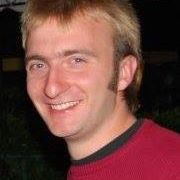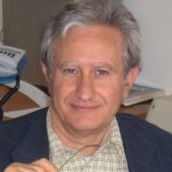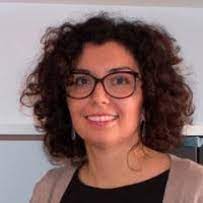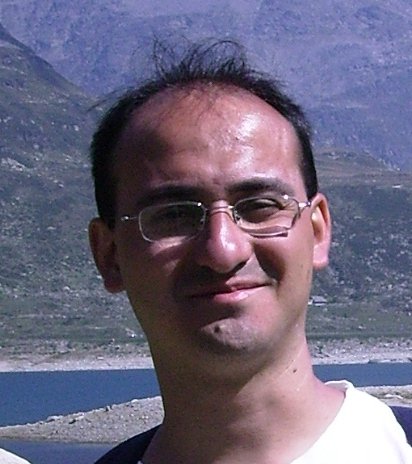Studying at the University of Verona
Here you can find information on the organisational aspects of the Programme, lecture timetables, learning activities and useful contact details for your time at the University, from enrolment to graduation.
Academic calendar
The academic calendar shows the deadlines and scheduled events that are relevant to students, teaching and technical-administrative staff of the University. Public holidays and University closures are also indicated. The academic year normally begins on 1 October each year and ends on 30 September of the following year.
Course calendar
The Academic Calendar sets out the degree programme lecture and exam timetables, as well as the relevant university closure dates..
| Period | From | To |
|---|---|---|
| I sem. | Oct 3, 2016 | Jan 31, 2017 |
| II sem. | Mar 1, 2017 | Jun 9, 2017 |
| Session | From | To |
|---|---|---|
| Sessione invernale Appelli d'esame | Feb 1, 2017 | Feb 28, 2017 |
| Sessione estiva Appelli d'esame | Jun 12, 2017 | Jul 31, 2017 |
| Sessione autunnale Appelli d'esame | Sep 1, 2017 | Sep 29, 2017 |
| Session | From | To |
|---|---|---|
| Sessione estiva Appelli di Laurea | Jul 18, 2017 | Jul 18, 2017 |
| Sessione autunnale Appelli di laurea | Nov 22, 2017 | Nov 22, 2017 |
| Sessione invernale Appelli di laurea | Mar 20, 2018 | Mar 20, 2018 |
| Period | From | To |
|---|---|---|
| Festa di Ognissanti | Nov 1, 2016 | Nov 1, 2016 |
| Festa dell'Immacolata Concezione | Dec 8, 2016 | Dec 8, 2016 |
| Vacanze di Natale | Dec 23, 2016 | Jan 8, 2017 |
| Vacanze di Pasqua | Apr 14, 2017 | Apr 18, 2017 |
| Anniversario della Liberazione | Apr 25, 2017 | Apr 25, 2017 |
| Festa del Lavoro | May 1, 2017 | May 1, 2017 |
| Festa della Repubblica | Jun 2, 2017 | Jun 2, 2017 |
| Vacanze estive | Aug 8, 2017 | Aug 20, 2017 |
Exam calendar
Exam dates and rounds are managed by the relevant Science and Engineering Teaching and Student Services Unit.
To view all the exam sessions available, please use the Exam dashboard on ESSE3.
If you forgot your login details or have problems logging in, please contact the relevant IT HelpDesk, or check the login details recovery web page.
Should you have any doubts or questions, please check the Enrollment FAQs
Academic staff
 alberto.benvegnu@univr.it
alberto.benvegnu@univr.it
 maurizio.boscaini@univr.it
maurizio.boscaini@univr.it
 federico.busato@univr.it
federico.busato@univr.it
Ugolini Simone
 simone.ugolini@univr.it
simone.ugolini@univr.it
Study Plan
The Study Plan includes all modules, teaching and learning activities that each student will need to undertake during their time at the University.
Please select your Study Plan based on your enrollment year.
1° Year
| Modules | Credits | TAF | SSD |
|---|
2° Year activated in the A.Y. 2017/2018
| Modules | Credits | TAF | SSD |
|---|
3° Year activated in the A.Y. 2018/2019
| Modules | Credits | TAF | SSD |
|---|
| Modules | Credits | TAF | SSD |
|---|
| Modules | Credits | TAF | SSD |
|---|
| Modules | Credits | TAF | SSD |
|---|
Legend | Type of training activity (TTA)
TAF (Type of Educational Activity) All courses and activities are classified into different types of educational activities, indicated by a letter.
Bio-information technology workshop (2018/2019)
Teaching code
4S003713
Credits
12
Language
Italian
Scientific Disciplinary Sector (SSD)
BIO/10 - BIOCHEMISTRY
The teaching is organized as follows:
Mod.1 laboratorio
Mod.1 teoria
Mod.2 laboratorio
Mod.2 teoria
Learning outcomes
The course will provide the theoretical and practical basis to understand and employ algorithms and programs currently used to retrieve and analyze data contained in the most used biological data repositories. Via group oral presentations, students will also acquire communication and self-evaluation skills.
The course is divided into two modules, as detailed below.
Module 1: In this module student will become acquainted with some of the most used software tools for managing data in proteomics, genomics, biochemistry, molecular and structural biology. Students will be introduced to the analysis and the visualization of structural data of biological macromolecules and their complexes, and to the design of simple static and dynamic models of biomolecular networks. The students will also be introduced to the most modern fields of systems biology.
Module 2: In this module students will learn how to employ the basic bioinformatic tools for the analysis, interpretation and prediction of biological data in proteomics, genomics, biochemistry, molecular biology. This course offers the possibility of applying state of the art bioinformatic tools to solve biological problems.
Program
------------------------
MM: Modulo 1
------------------------
Theoretical Module
- Overview of the main structural features of proteins and nucleic acids in relation to the concept of evolution. Introduction to biomolecular databases: online resources and their use
- Biological databases: organization and integration of information concerning: a) protein and nucleic acid sequences; b) biomolecular structures; c) bibliographic and scientific literature. Retrieve of specific information: use of limitations and Boolean operators.
- Sequence comparison and alignments: static and dynamic algorithms; substitution matrices (PAM,BLOSUM) - Search-algorithms: dynamic algorithms; Smith-Waterman; Needleman-Wunsch; statistic significance for an alignment (z-score, expectation values and probability); heuristic methods for local alignments; BLAST
- Multiple sequence alignments: ClustalW, search on specific databases, other algorithms, PSI-BLAST
- Introduction to Structural Bioinformatics: visualization and analysis of protein and nucleic acid 3D structures
- Methods to predict protein secondary structure elements starting from the sequence; introduction to neural networks. NN-based methods - Introduction to Systems Biology: Spatial and temporal scales, static and dynamic models, mathematical frameworks, introduction on signal transduction networks Laboratory Module
- NCBI databases: Entrez interface, Gene, UniGene, Protein, Uniprot and EBI
- Single and multiple sequence alignments, score matrices, optimal methods; online resources and spreadsheets - BLAST,PSI-BLAST and BLAT: online tools and their use
- Tools for multiple alignments, the Homologene databank, computation and visualization of multiple alignments - Introduction to PyMol and molecular visualization. Use of PSI-PRED and JPRED for predicting secondary structures from sequences - Systems biology: numerical simulation of simple biochemical reactions. Building simple kinetic models by using SBOTOOLBOX2 for Matlab; application to G-potein signalling cycles.
-----------------------
MM: Modulo 2
------------------------
Bioinformatic tools for the analysis of molecular evolution and phylogenesis: Molecular clock, substitution models, methods for the construction of phylogenetic trees.
Protein structural predictions: Comparative modeling, Fold recognition and ab initio methods.
Gene prediction Functional annotation Microarrays: databases and programs for the analysis of expression data. Introduction to the energetic treatment of proteins: MD simulations, ligand-protein and protein-protein docking.
The teaching includes: front lectures and hands-on laboratories on the PC. The students are also involved in a project to be developed in groups.
Bibliography
| Activity | Author | Title | Publishing house | Year | ISBN | Notes |
|---|---|---|---|---|---|---|
| Mod.1 laboratorio | Stefano Pascarella e Alessandro Paiardini | Bioinformatica | Zanichelli | 2011 | 9788808062192 | |
| Mod.1 laboratorio | Jonathan Pevsner | Bioinformatics and Functional Genomics, 3rd Edition | Wiley-Blackwell | 2015 | 978-1-118-58178-0 | |
| Mod.1 teoria | Stefano Pascarella e Alessandro Paiardini | Bioinformatica | Zanichelli | 2011 | 9788808062192 | |
| Mod.1 teoria | Jonathan Pevsner | Bioinformatics and Functional Genomics, 3rd Edition | Wiley-Blackwell | 2015 | 978-1-118-58178-0 | |
| Mod.2 laboratorio | Stefano Pascarella e Alessandro Paiardini | Bioinformatica | Zanichelli | 2011 | 9788808062192 | |
| Mod.2 teoria | Stefano Pascarella e Alessandro Paiardini | Bioinformatica | Zanichelli | 2011 | 9788808062192 | |
| Mod.2 teoria | Frishman, D., Valencia, Alfonso | Modern Genome Annotation | Springer | 2008 |
Examination Methods
------------------------
MM: Modulo 1
------------------------
In order to pass the examination, students shall demonstrate: - to understand the concept of homology and its practical implications in bioinformatics - to understand the difference between similarity and identity of biological sequences - to know how to query bioinformatics databases, in order to obtain and store relevant data and to conduct appropriate cross-searches on different databases - to know how to use algorithms for comparison of nucleotide and amino acid sequences - to know how to use software for molecular graphics and visualization - to know how to build simple interaction networks of biomolecules and simulate their time course.
Theory:
The exam consists of a written test with 5 open questions on the topics discussed in the course. Each correct question will score a maximum of 6 points. The test will last 75 minutes.
Laboratory :
The exam, which can be given on the same day of the theory part, is made of 3 exercises to be solved using the computer (each one has a maximum 10 points-score). The test will last 75 minutes.
Presentations:
At the end of January, groups of 2 or 3 students will present a database of their choice, which has been described in the January issue of Nucleic Acids Research (Database issue). A10 minute presentation (+ 3 minute for questions / discussion) shall be given, illustrating the database goals and an original test-case. Presentation will be given a score of 1 to 4, taking into account the depth of the presented subject, clarity and effectiveness of communication and mastery of the tools used.
Final score : The final score, in thirty's (/30), will be given by the average score of the theoretical and laboratory part, plus the score for the presentation.
------------------------
MM: Modulo 2
------------------------
The written exam is divided in two: a session of open questions regarding the theoretical arguments of the course: modelling, docking and gene annotation. The second phase consists in the preparation of a scientific-like article presenting the results obtained during the project development
Type D and Type F activities
Modules not yet included
Career prospects
Module/Programme news
News for students
There you will find information, resources and services useful during your time at the University (Student’s exam record, your study plan on ESSE3, Distance Learning courses, university email account, office forms, administrative procedures, etc.). You can log into MyUnivr with your GIA login details: only in this way will you be able to receive notification of all the notices from your teachers and your secretariat via email and soon also via the Univr app.
Graduation
List of theses and work experience proposals
| Stage | Research area |
|---|---|
| Correlated mutations | Various topics |
Attendance
As stated in the Teaching Regulations for the A.Y. 2022/2023, attendance at the course of study is not mandatory.

 045 802 7823
045 802 7823
































